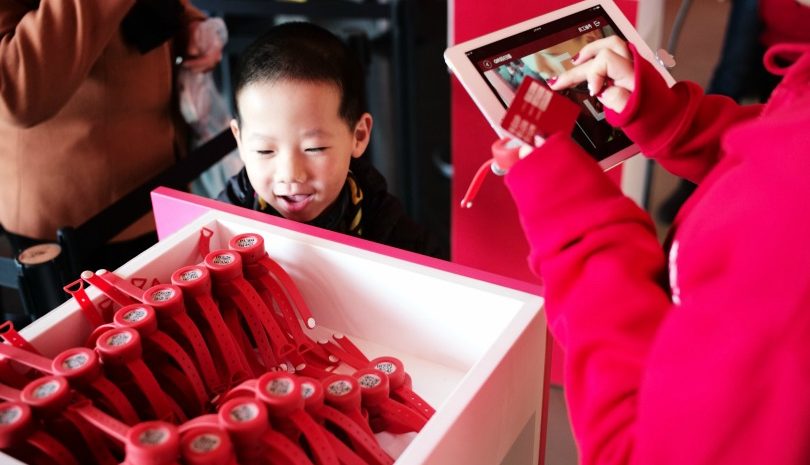Digitally mapping the customer journey

International retailers with an ambition to crack the Chinese market are experimenting with futuristic retail concepts at a Shanghai-based innovation lab called The Explorium.
The Explorium was opened in September 2015 in Shanghai by the Fung Group, a Hong Kong-based multinational, in partnership with data and analytics technology provider, IBM, and brand activation company, Pico.
It is located within more than 23,000sqm of trade exhibition space at LiFung Plaza, where it provides a controlled setting for businesses to observe and explore in real time how consumers interact with new technologies, products and environments.
“It looks like a shopping mall, but it’s not,” said Simeon Piasecki, Explorium lab director.
The experiments aim to test how technology can enhance the retail environment and how a bricks and mortar store can drive customers to an e-commerce site.
Within the Explorium, Toys ‘R’ Us has created a game where the kids and parents play together, at the end of each level they scan a QR code. After collecting a certain number of QR codes, they can redeem them for an online voucher – effectively converting a customer into an online customer.
Shoe retailer, Stride Rite, is trialling an instore game to encourage children to try on shoes. The child has to mimic dance moves on a screen, but can only take part in the game while wearing a pair of shoes from the store. At the end of the game, each child receives a, “fabulous score” which they can post online.
“We know that increases the conversation rate, we know that increases dwell time. You can take the score and post it on your own social media, so we get a lot of brand reach as well,” Piasecki said.

The Explorium, which doesn’t spend marketing through traditional channels, started with 3000 participants and grew to more than 25,000 within three months thanks to social media sharing.
When they are arrive at the Explorium, visitors are tracked via a wristband and a network of beacons.
“What we are very interested in learning is how do families stay together [and] disperse – how do they react through the consumer journey,” Piasecki explained.
“We have lots of assumptions about how families work together as a unit when they shop. Here, we are able to actually see it through the technology.”
Although the lab is specifically to test concepts in the Chinese market, Piasecki believes the experiments could have global influence.
“Arguably, with the explosion of retail technology in China, we think this will have global application. This is very much about helping brands experiment to understand the future of retail as we would describe it.
“Arguably the Shanghai consumer is probably going to be one of the most developed and challenging consumers in the world, simply because of the technology that they have access to. In Shanghai, over 90 per cent of people have a smartphone; on that smartphone are dozens of shopping apps, dozens of opportunities to share.”
This article was originally published in Inside Retail’s February magazine, click here to subscribe.
Comment Manually
You must be logged in to post a comment.


No comments